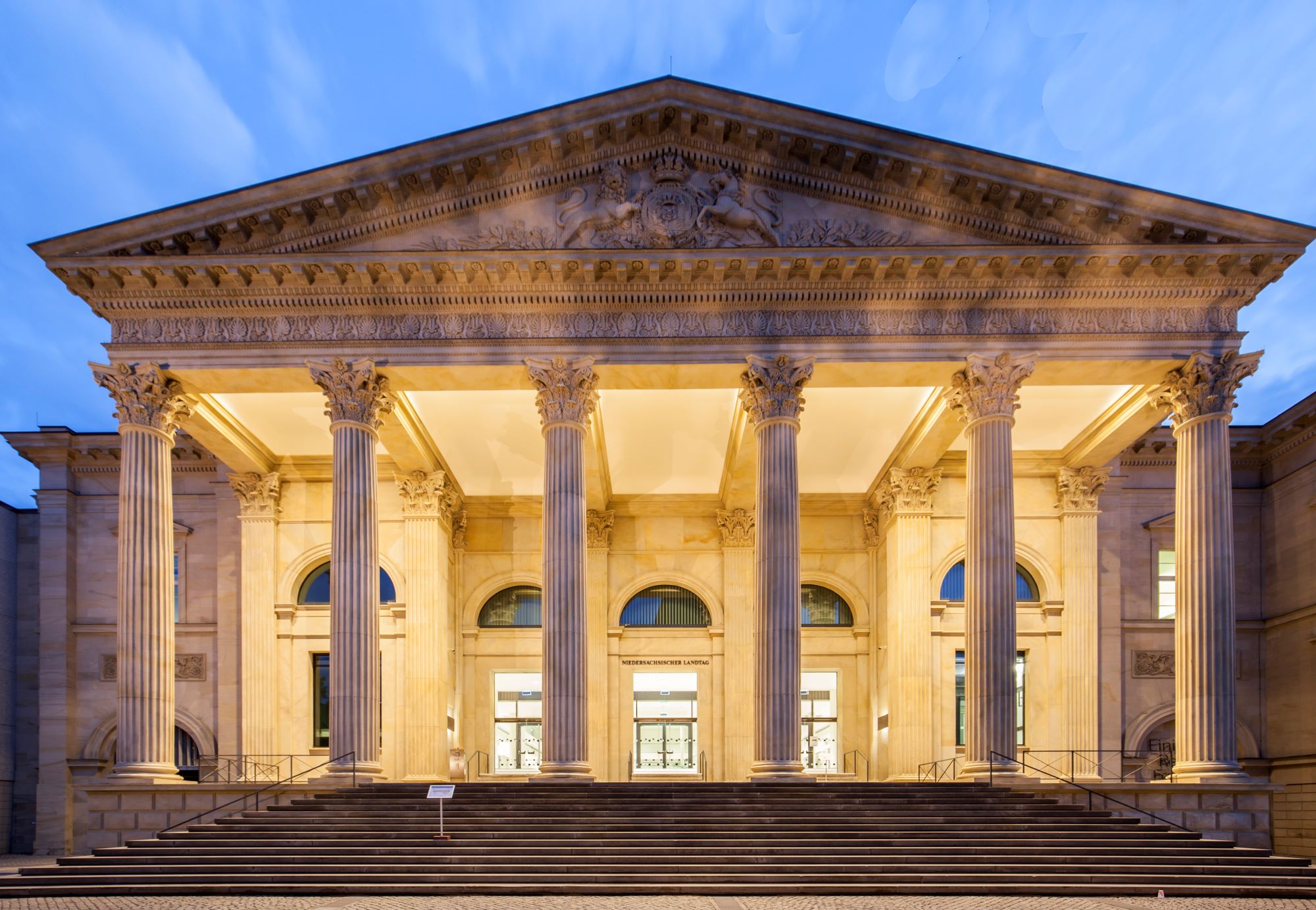
The Leineschloss, which today houses the Lower Saxony State Parliament and was once a royal residence, has its origins in a Franciscan monastery founded in the 12th century, which was dissolved in 1533. After the Duke of Calenberg proclaimed Hanover a royal seat in 1636, the north-west wing of the palace was renovated in 1742. The remaining parts of the castle were completely remodelled by the master builder Georg Friedrich Laves between 1816 and 1844.
A notable feature is the representative neoclassical portico on Leinstraße, which is supported by six Corinthian columns and has a flat triangular gable. The coat of arms of the state of Lower Saxony can be seen on the pediment. The Lein side of the castle, with its three storeys and mansard roof, has more of a baroque character. After its destruction in the Second World War, the Leineschloss was rebuilt from 1956 to 1962 and the south wing was replaced by a modern extension with a plenary hall.
A new phase in Gottfried Wilhelm Leibniz's life began in December 1676, shortly after his arrival in Hanover. When he took over the management of the ducal library, its collection originally comprised 3,310 volumes and 158 manuscripts.
Thanks to Leibniz's many international contacts, he quickly succeeded in significantly expanding the collection. He also initiated a redesign of the Knights' Hall in the palace. He documented the arrangement of the ceiling paintings and the portraits of the members of the Guelph princely family in his designs.
Leibniz later moved his workplace and books to Leinstraße and later to Schmiedestraße.
+ Read more